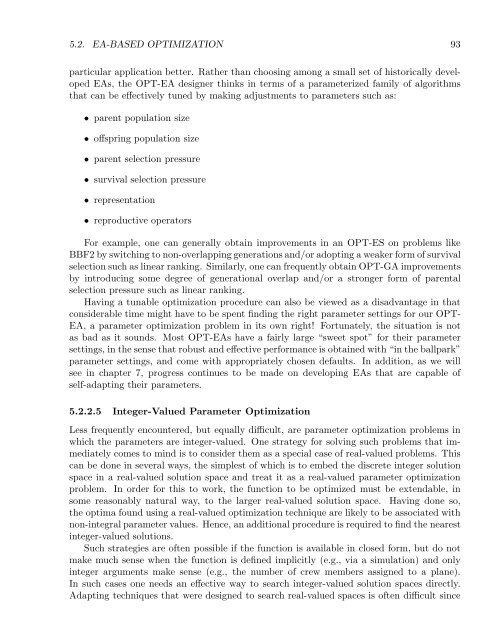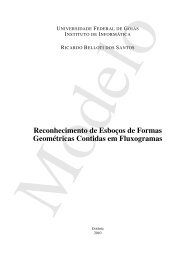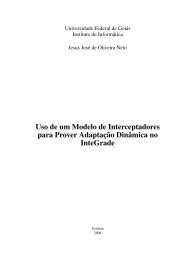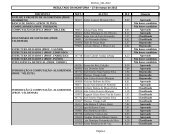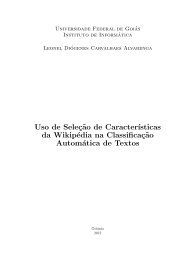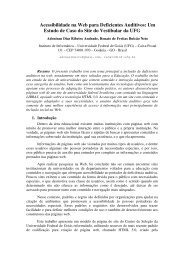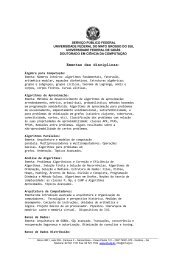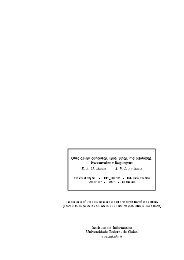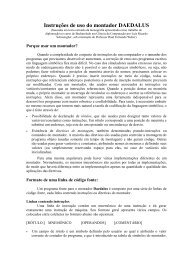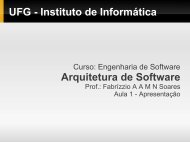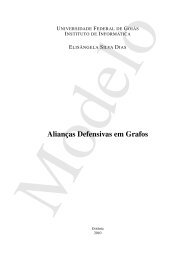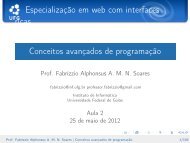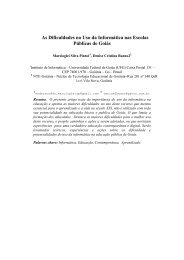Evolutionary Computation : A Unified Approach
Evolutionary Computation : A Unified Approach
Evolutionary Computation : A Unified Approach
You also want an ePaper? Increase the reach of your titles
YUMPU automatically turns print PDFs into web optimized ePapers that Google loves.
5.2. EA-BASED OPTIMIZATION 93<br />
particular application better. Rather than choosing among a small set of historically developed<br />
EAs, the OPT-EA designer thinks in terms of a parameterized family of algorithms<br />
that can be effectively tuned by making adjustments to parameters such as:<br />
• parent population size<br />
• offspring population size<br />
• parent selection pressure<br />
• survival selection pressure<br />
• representation<br />
• reproductive operators<br />
For example, one can generally obtain improvements in an OPT-ES on problems like<br />
BBF2 by switching to non-overlapping generations and/or adopting a weaker form of survival<br />
selection such as linear ranking. Similarly, one can frequently obtain OPT-GA improvements<br />
by introducing some degree of generational overlap and/or a stronger form of parental<br />
selection pressure such as linear ranking.<br />
Having a tunable optimization procedure can also be viewed as a disadvantage in that<br />
considerable time might have to be spent finding the right parameter settings for our OPT-<br />
EA, a parameter optimization problem in its own right! Fortunately, the situation is not<br />
as bad as it sounds. Most OPT-EAs have a fairly large “sweet spot” for their parameter<br />
settings, in the sense that robust and effective performance is obtained with “in the ballpark”<br />
parameter settings, and come with appropriately chosen defaults. In addition, as we will<br />
see in chapter 7, progress continues to be made on developing EAs that are capable of<br />
self-adapting their parameters.<br />
5.2.2.5 Integer-Valued Parameter Optimization<br />
Less frequently encountered, but equally difficult, are parameter optimization problems in<br />
which the parameters are integer-valued. One strategy for solving such problems that immediately<br />
comes to mind is to consider them as a special case of real-valued problems. This<br />
can be done in several ways, the simplest of which is to embed the discrete integer solution<br />
space in a real-valued solution space and treat it as a real-valued parameter optimization<br />
problem. In order for this to work, the function to be optimized must be extendable, in<br />
some reasonably natural way, to the larger real-valued solution space. Having done so,<br />
the optima found using a real-valued optimization technique are likely to be associated with<br />
non-integral parameter values. Hence, an additional procedure is required to find the nearest<br />
integer-valued solutions.<br />
Such strategies are often possible if the function is available in closed form, but do not<br />
make much sense when the function is defined implicitly (e.g., via a simulation) and only<br />
integer arguments make sense (e.g., the number of crew members assigned to a plane).<br />
In such cases one needs an effective way to search integer-valued solution spaces directly.<br />
Adapting techniques that were designed to search real-valued spaces is often difficult since


